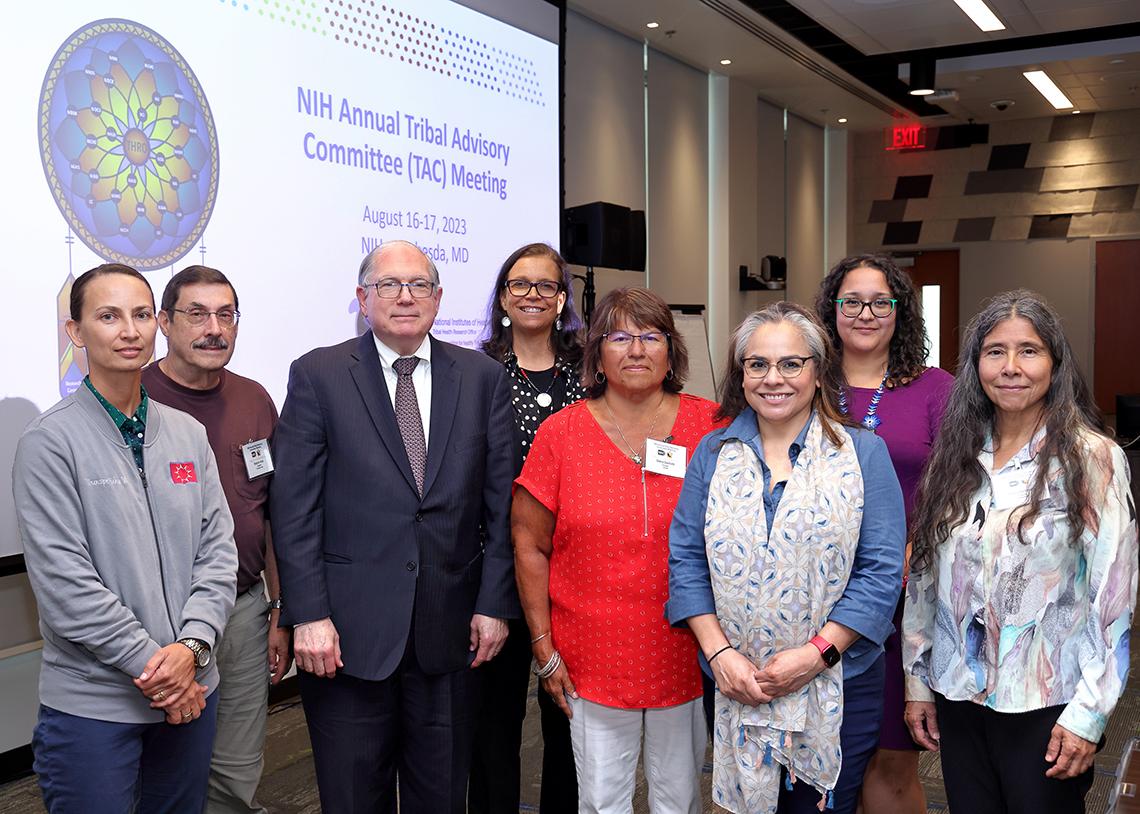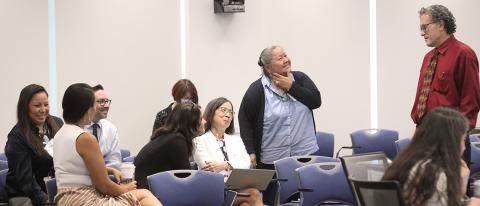Tribal Advisory Committee Visits NIH for Annual Meeting

Photo: Chia-Chi Charlie Chang
NIH held its annual Tribal advisory committee (TAC) meeting on the Bethesda campus on Aug. 16 and 17. Tribal leaders from across the country joined NIH leadership and staff to discuss how NIH is working to translate scientific discoveries into clinical advances that help people get and stay healthy.
TAC provides a forum for elected Tribal officials serving on the committee and NIH officials to exchange views, share information and seek advice about NIH policies and priorities. The committee allows Tribes and American Indian and Alaska Native (AI/AN) people to have meaningful and timely input in developing NIH programs.

Photo: Chia-Chi Charlie Chang
During the two-day meeting, TAC members and NIH staff heard from AI/AN investigators about innovations in community-centered research and in research and training. NIH-funded AI/AN researchers and research educators discussed research progress and impediments within AI/AN communities, and the forward movement and hurdles in growing the AI/AN field of investigators. TAC members also toured the Clinical Center (CC) and visited two National Heart, Lung and Blood Institute (NHLBI) labs to learn about NIH’s intramural research program and opportunities to participate in clinical research. As many were new to the committee, this was their first visit to NIH.
The group first met CC Chief Operating Officer Pius Aiyelawo, who provided an overview of the CC’s past, present and future. Aiyelawo answered questions about patient and operational procedures. NHLBI Chief of Patient Engagement and Recruitment Julie Erb-Alvarez led the group to the Medical Board Room where Dr. Alicia Mousseau, vice president of the Oglala Sioux Tribe and TAC delegate, led a blessing for the group and NIH.

Photo: Chia-Chi Charlie Chang
Dr. Richard Childs, NHLBI clinical director and acting scientific director, explained how his institute is bringing research and clinical work together at the CC. He described some of the first-in-class treatments founded at NIH, such as chemotherapy, HIV/AIDS medications and one of the mRNA Covid-19 vaccines. Childs emphasized how NHLBI and other NIH components “come together as a community to translate science to clinical discourses” through a diverse workforce and patient population.
The group visited Childs’s Laboratory on Transplantation Immunotherapy, where they saw T cells and natural killer cells under a microscope and learned how researchers are finding ways to adapt and enhance immune cells to attack cancers.
Tribal leaders also visited Stadtman investigator Dr. Tiffany Powell-Wiley’s lab to learn how NHLBI is studying social determinants of obesity and cardiovascular risk to develop appropriate interventions. TAC members were interested in epigenetic markers and how the lab’s work is being translated to the policy level, a goal the lab is aiming to achieve with its research.
